The Iranian premier football league has had one of its darkest moments in recent history, as violence erupted following a game between Tabriz team Tractor Sazi and Tehran’s Paykan Football Club, resulting in up to 60 injured fans, police and emergency staff.
The match, on the afternoon of Friday, April 19, took place in Tabriz, the capital of the northwestern province of East Azerbaijan, and members of the media become embroiled in the bloody event. The level of violence was unusual for Iranian football. There was also concern that the unrest was spurred on by ethnic tensions, as Tabriz, the capital of East Azerbaijan, is largely populated by Azeris.
“I was wearing the orange coveralls of the AFC Champions League and carrying the league’s press card when I witnessed everything that happened at Yadegar-e Emam Stadium in Tabriz,” wrote Mohammad Hemmati, a reporter for the website Varzesh (“Sports”) 3, who witnessed close-up one of Iran’s Pro League's most catastrophic days. “After the coaches’ press conference I moved toward the stadium’s turf so perhaps I would be safer from the stones that were being thrown. But immediately I was hit hard on my head and legs and I fell to the ground. When I recovered I saw that they were taking me to the lower part of the stadium. The anti-riot policemen told me that I was guilty of filming even though at no time had I been carrying my mobile in my hand. They completely ignored my coveralls and my press card. Then they took me to the detention center, took away my mobile and searched me. They forced me to sit facing the wall for an hour. It was there that I met Masoud Shojaei’s assailant. He was sitting next to me facing the wall and was saying that he wanted to lodge a complaint against Ashkan Dejagah.” Hemmati was referring to a man who had rushed out on the pitch and hit Masoud Shojaei, the captain of the Iranian National Football Team, in the face.
Teams Tabriz Tractor Sazi, Persepolis, Esteghlal and Sepahan are all hoping to win the Iranian Pro League championship. On April 12, Tractor Sazi lost 3-1 to Sepidrood Rasht, jeopardizing its chances to top the league. Without consulting the team’s technical staff, the team’s owner, Mohammad Reza Zonouzi, expelled its goalkeeper Mohsen Forouzan, giving the reason that Forouzan, his brother and his wife were suspected of involvement with betting gangs. Forouzan was blamed for a series of mistakes and giving away the match. Zonouzi also referred Forouzan to the disciplinary committee of the Iranian football federation, and his decision was overwhelmingly supported by Tractor Sazi fans. However, the federation’s disciplinary committee did not respond.
The “Emotionals”
Over the years, Tabriz Tractor Sazi fans have been nicknamed the “Emotionals” — and for years the stands at Tabriz’s Yadegar-e Emam Stadium have turned into a platform for Pan-Turkists — people who follow the belief that Turkic people should be culturally and politically unified.
“Those coming to the stadium who, without a doubt, have aims that have nothing to do with football are making the atmosphere in the stadium toxic,” said Ali Daei, the former football star and the current manager of Saipa FC, who himself comes from the province of Ardabil and speaks Azeri (a dialect of Turkish), during a press conference after a game between Persepolis and Tractor Sazi in 2013. “We did not come by our honor cheaply. This is Iran and Azerbaijan belongs to Iran, too.”
Ali Daei was referring to the behavior of Tractor Sazi fans in the stands of the stadiums. Since the late 2000s, the atmosphere in the Yadegar-e Emam Stadium has been increasingly imbued with separatist sentiments. Fans have chanted out “Arabian Gulf” (in retaliation to the official “Persian Gulf”), racist chants against Persians, and carried the flag of the Azerbaijan Republic as a symbol of separatism, and they have also pulled down the Iranian flag at Tehran’s Azadi Stadium during recent years.
The root of the troubles, however, go back to a wealthy military institution — in other words, to the Islamic Revolutionary Guards Corps (IRGC).
The Revolutionary Guards Take Over
In 2008, the Mehr Eghtesad Iranian Investment Company bought 42.5 percent of the huge Tabriz Tractor Manufacturing Company, the parent of Tractor Sazi (“Manufacturing”) Football Club, from the government of President Mahmoud Ahmadinejad. As has been the pattern with other companies and factories targeted for acquisition by the Revolutionary Guards, the price, 177 billion tomans ($42 million), was astonishingly low. The down payment was less than $11 million and the rest was paid in installments over a period of five years.
Mehr Eghtesad Iranian Investment Company is a subsidiary of Mehr Bank, a credit and finance conglomerate owned by the Revolutionary Guards’ paramilitary Basij organization. Other commercial entities in the conglomerate include Tidewater Middle East Co., a major port operator, the Iranian Aluminum Company (IRALCO), the largest producer of aluminum in Iran, Mobarakeh Steel Company, the Iran Tractor Manufacturing Company, the Iran Zinc Mines Development Company, Toos Gostar Investment Company, Bank Parsian and 15 other smaller companies. And when Naser Shafagh, a retired employee of the Guards’ Intelligence Organization, was appointed as the CEO of Tractor Sazi, IRGC’s takeover of this premier football club was complete.
In 2010, Tractor Sazi was literally turned into a military unit. First IRGC Commander Mohammad Hossein Jafar was appointed as the CEO and Mohammad Rostami, deputy to the provincial governor, was placed at the head of the board of directors. Also appointed to the board of directors were Colonel Mohammad Esmail Saeedi, deputy commander of the IRGC’s East Azerbaijan Ashura Division, Colonel Mohammad Javad Delfekar and Mohammad Reza Ahantan, a member of Mehr Bank in East Azerbaijan.
The same year, IRGC’s Ground Force officially announced that it was the owner of Tractor Sazi FC and that the club would be managed under the supervision of the corps’ Ashura Division.
Fans Unhappy
At the beginning, the military’s ownership of the club brought it two advantages. It attracted many soldier-footballers and it found access to a huge amount of money to spend. But the fans in Tabriz were not happy with this arrangement. In January 2018, for the first time, the fans in the stadium chanted slogans against the Revolutionary Guards [Persian link].
The IRGC decided to placate the angry fans by bringing in high-priced coaches from Turkey, but as Tractor Sazi’s losing streak continued, it led to further anti-Guards chants during football matches. As a result, the IRGC decided to nominally give up the ownership of the club. Abedin Khorram, commander of Ashura Division, announced in the spring of 2018: “When the season ends, Tabriz Tractor Sazi FC will be transferred to a reliable [party] in the private sector.” But it turned out that this “reliable party” was none other than Mohammad Reza Zonouzi — an individual known for buying Mahmoud Ahmadinejad’s car, and for owing a lot of money to the banks.
A Story of Wealth and Corruption
Zanouzi’s full name is Mohammad Reza Zonouzi, and he is reputedly one of the 10 richest men in Iran, and a product of Ahmadinejad’s presidency. “It has been said that a person who bought Ahmadinejad’s automobile used to own only one warehouse where he did small industrial jobs,” an article in 9 Dey, owned by Hamid Resaee, a hardliner member of the parliament, stated in 2011. But “gradually this person, through his many connections with the government, has amassed a great wealth. At this moment this person owns 30 percent of the shares of Tourism Bank, 34 percent of the shares of Saman Bank and shares in [automaker] Tabriz Iran Khodro and ATA Airlines.”
But this article only set out part of Zonouzi’s vast wealth. Through his connections with the government of President Ahmadinejad, he became a steel tycoon. And in in the summer of 2012, he was arrested as part of a three trillion tomans (over $700 million) corruption case. Referring to him only as “M.Z.,” the Judiciary Spokesman Gholamhossein Mohseni Ejei confirmed his arrest. However, in autumn of the same year, the Young Journalists Club reported: “Mr. Zonouzi, one of the biggest debtors to the banks...has been released on a bail of 500 million tomans (close to $120,000] so that he can repay his debts on time.”
He started the 2018 football season by spending huge amounts of money. With the help of Iran’s Football Federation, he successfully bypassed a very clear FIFA law and owned two football clubs in Tabriz — Tractor Sazi and Machine Sazi. Under FIFA bylaws, it is not permissible to own or manage two football clubs, even if the clubs are on the opposite sides of the globe.
Zonouzi was in hurry to build up the club. First he brought in the Welsh coach John Toshack, who has been highly praised by Sir Alexander Ferguson of Manchester United fame. But a little later, Zonouzi dismissed Toshack and hired the Iranian coach Mohammad Taghavi. Despite Taghavi’s brilliant results, however, Zonouzi dismissed him as well and replaced him with the famous Belgian coach Georges Leekens.
Seeds of Division
But what the Guards-appointed managers of Tractor Sazi lacked was an ability to manage its public relations. They enraged the fans through the club’s Telegram channel, and sowed the seeds of division. What happened on Friday, April 19, was a manifestation of the rage of some of Tractor Sazi’s fans, who did not believe that the goals scored against their team were just. It used to be that when Tractor Sazi conceded a goal, the fans would shout: “No problem!” But this time they protested, called the footballers “shameless cowards,” set out to attack the club’s owner, rushed into the playing field and slapped Masoud Shojaei, captain of the Iranian National Football Team, in the face.
But the situation was worse outside the stadium. According to reporters present at the scene, when troubles started, anti-riot police did not have enough manpower to control the riot outside the stadium. Tractor Sazi fans attacked anti-riot police and clashes followed.
According to Tasnim News Agency, players from both teams were confined to the locker room for more than three hours and reporters were not allowed to leave the stadium. The website Varzesh 3 published photographs of cars with broken windows from around the stadium.
Anti-riot police used water cannons to disperse the protesters and some of the fans attacked the police by throwing stones. The police later claimed that they had shown restraint in trying to disperse the protesters.
There were early reports that more than 60 people, including fans and police, had been injured. However, police reported that only five people had been taken to the hospital because of their injuries. Nevertheless, photos of the riots published by news agencies afterward reveal that there 10 injured people.
Esmail Hassanzadeh, head of the football federation’s Disciplinary Committee, told Tasnim News Agency that the unrest in the stadium was the result of recent interviews with the managers of Tractor Sazi and that the federation had appointed investigators to establish the facts of what happened.
On April 20, Mohammad Reza Pour-Mohammadi, provincial governor of East Azerbaijan, had a meeting with political, security, judiciary and sports officials. However, the only outcome of the meeting that was made public was the governor’s appreciation of the police’s work during the unrest.
But what happened in Tabriz could be a prelude to a bigger disaster. It’s possible that the public at large will now pay more attention to the growing seeds of division in Iranian football.
Related Coverage:
Corruption, Lies, and Iran's Football Federation, February 21, 2019
IranWire Exclusive: Iranian Football’s Million-Dollar Swindle, February 6, 2019
Decoding Iran’s Politics: Football and State Interference, June 11, 2018
Football Legend Faces Discipline After Attacking Federation, February 8, 2018
visit the accountability section
In this section of Iran Wire, you can contact the officials and launch your campaign for various problems




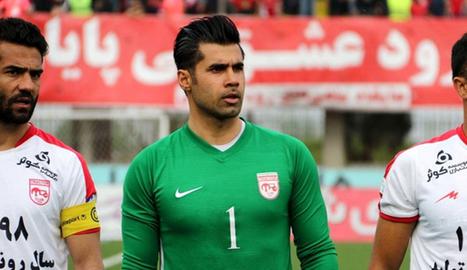
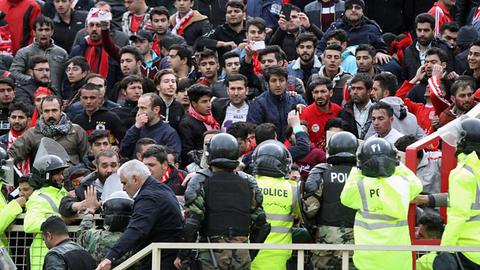
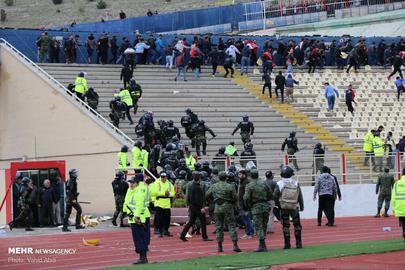













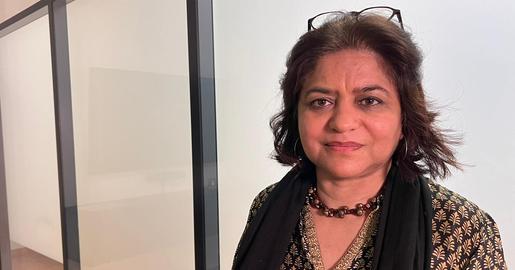





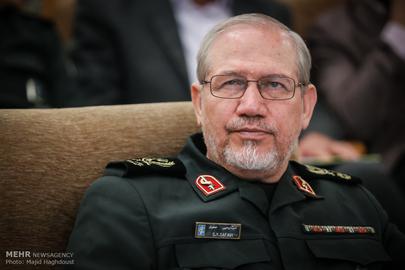
comments